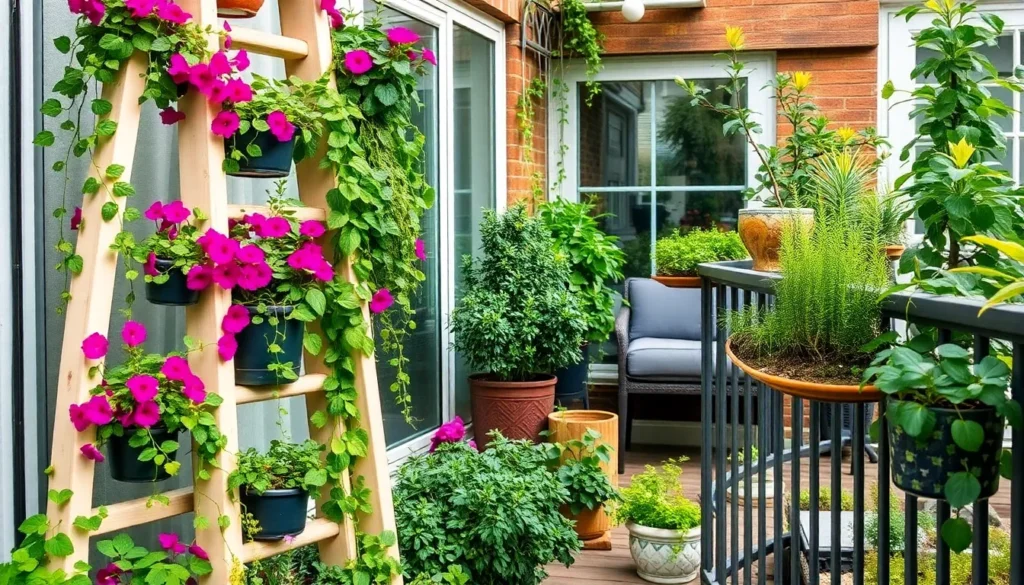Whether you’re a seasoned gardener with a lifetime of experience or a newcomer just beginning to explore the joys of nurturing plants, “10 Creative Garden Ideas for Limited Spaces” promises to ignite your enthusiasm and transform your gardening journey. In this guide, you’ll discover innovative techniques and clever designs that turn even the smallest nooks into lush, vibrant havens of greenery.
Imagine the satisfaction of cultivating a thriving garden that fits perfectly within your cozy apartment balcony or compact urban backyard. With these practical ideas, you’ll not only maximize your space but also enjoy the therapeutic benefits and aesthetic pleasures that come with successful gardening.
As you delve into these inventive solutions, you’ll find your confidence blossoming alongside your plants. Embrace the challenge of limited spaces with a smile, knowing that with a little creativity and guidance, your gardening dreams are well within reach.
Utilize Vertical Planting Solutions
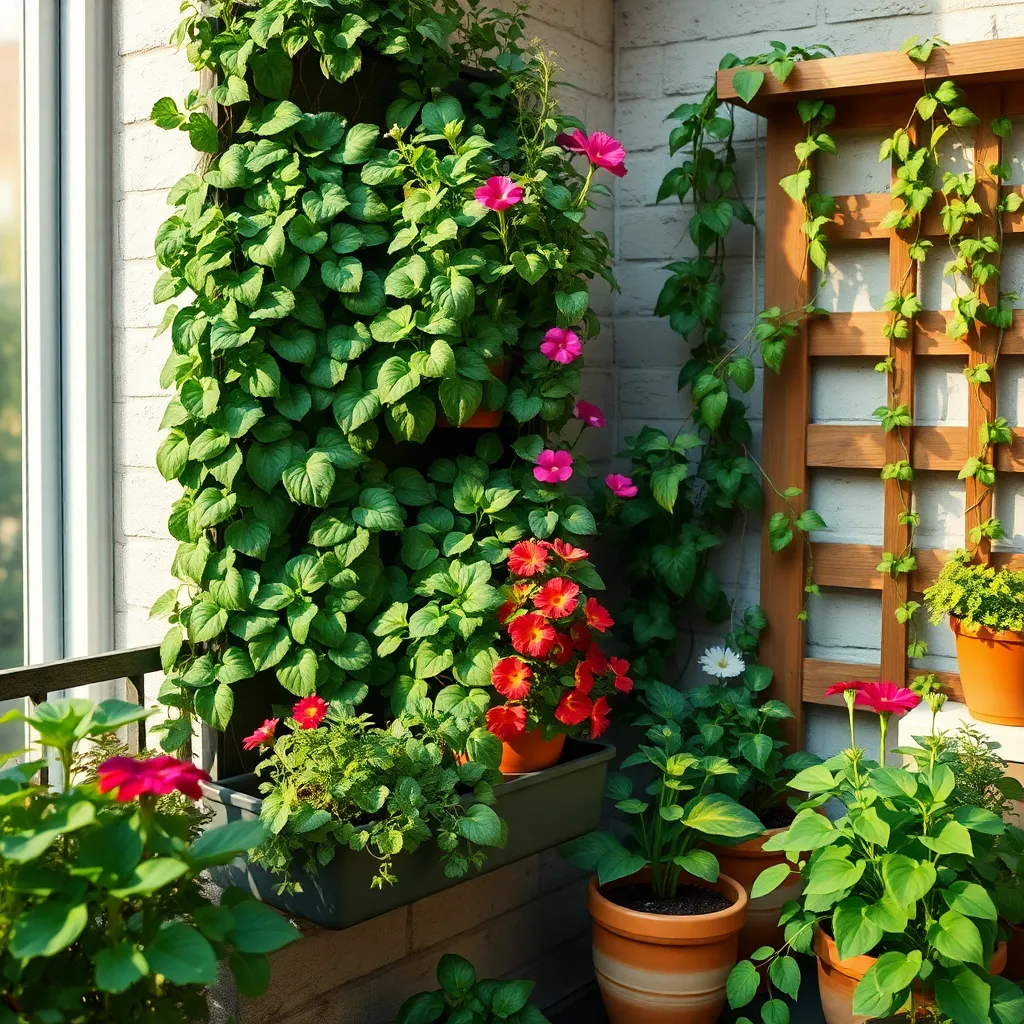
Vertical planting solutions are a fantastic way to maximize space in small gardens. By using trellises, wall planters, or vertical gardens, you can transform even the tiniest area into a lush, green oasis.
For beginners, starting with a simple wall-mounted planter can be an easy introduction to vertical gardening. Choose sturdy containers and fill them with a lightweight, well-draining potting mix to ensure healthy plant growth.
Consider plants that thrive in vertical settings, such as herbs like basil and mint, or trailing plants like pothos and ferns. These species not only adapt well to vertical arrangements but also provide delightful aesthetics and aromas.
Experienced gardeners might experiment with creating a living wall using a modular system. This advanced technique involves securing plants in pockets or panels, which can be irrigated using a drip system to maintain consistent moisture levels.
Ensure adequate sunlight reaches your vertical garden by placing it against a south or west-facing wall. Regularly check soil moisture, as plants in vertical setups may dry out faster due to increased exposure to wind and sun.
To further enhance your vertical garden, incorporate a mix of flowering plants for seasonal color and visual interest. By carefully selecting plants with different bloom times, you can enjoy a vibrant display throughout the year.
Incorporate Hanging Planters Strategically

Hanging planters can transform even the smallest space into a lush garden, making them ideal for balconies or patios. By suspending plants at eye level, you create a visually appealing dynamic that maximizes your available space without cluttering the ground.
When choosing plants for hanging planters, consider those with cascading growth habits, such as petunias, ferns, or ivy. These plants not only add texture and depth but also thrive in well-draining soil types, making them perfect for suspended environments.
Ensure your hanging planters have adequate drainage holes to prevent water from pooling and causing root rot. For best results, use a lightweight potting mix enriched with perlite or vermiculite to enhance drainage and aeration.
Watering frequency is crucial for hanging planters, as they tend to dry out faster than ground-based containers. Check moisture levels frequently, and aim to water when the top inch of soil feels dry, typically once every few days in warm weather.
Opt for Compact Container Gardens
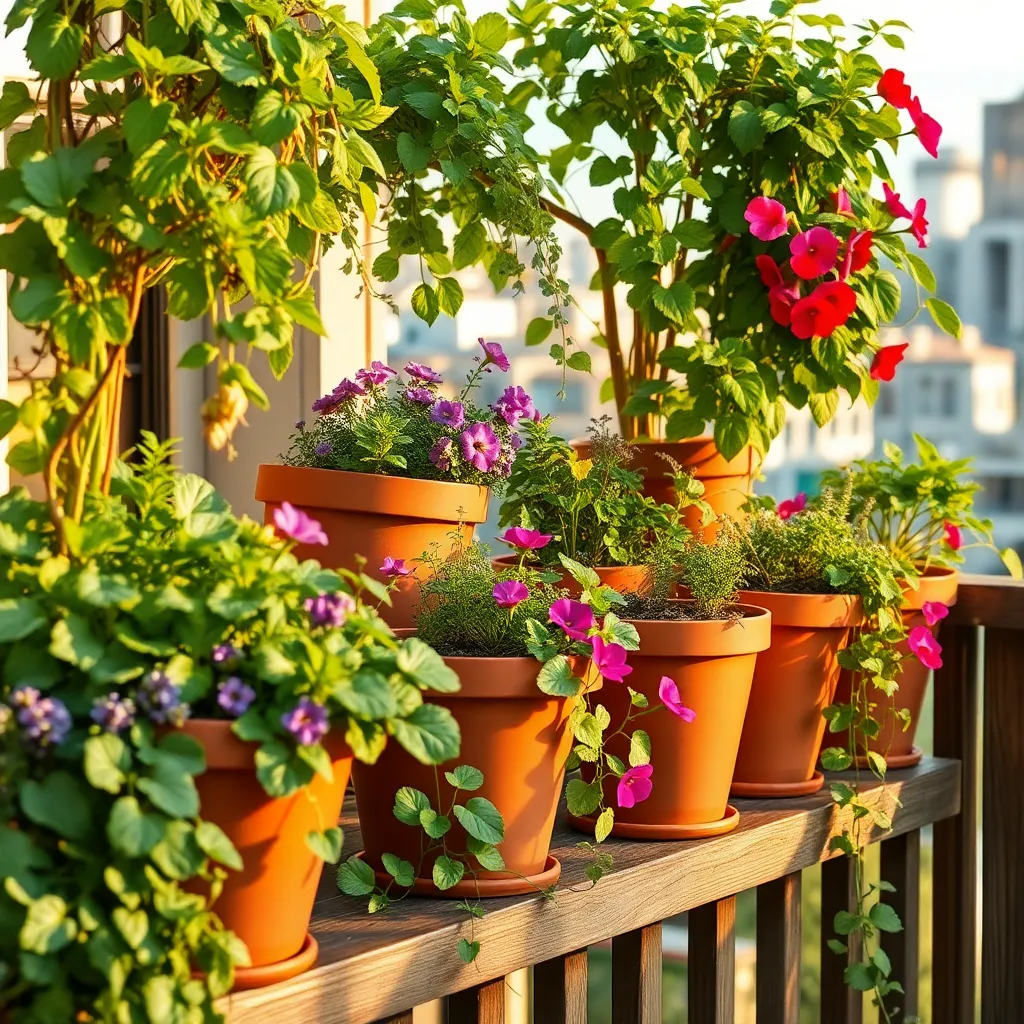
Compact container gardens are an excellent solution for those with limited space. By choosing the right containers and plants, you can create a thriving garden in even the smallest of spaces. Consider using containers made from lightweight materials such as plastic or fiberglass to make moving them easier. Additionally, select containers with drainage holes to prevent waterlogging and promote healthy root growth.
When selecting plants for your compact container garden, opt for varieties that thrive in confined spaces. Herbs like basil, mint, and chives are perfect choices as they require minimal space and can be harvested frequently. For a pop of color, consider dwarf varieties of flowering plants like marigolds or zinnias. These plants will not only enhance your garden’s aesthetic but also attract beneficial pollinators.
Soil quality is crucial in container gardening, so use a high-quality potting mix that retains moisture but drains well. A mix with added perlite or vermiculite is beneficial, as it ensures proper aeration and allows roots to breathe. For beginners, a general-purpose potting mix is a great starting point, while advanced gardeners can experiment with custom blends to suit specific plant needs.
Proper watering is essential; containers dry out more quickly than garden beds. Check the moisture level by inserting your finger into the soil—if it feels dry, it’s time to water. To maintain consistent moisture, consider using a self-watering container or adding a layer of mulch on top of the soil. This practical approach helps in conserving water and ensures your plants stay healthy even during dry spells.
Build a Tiered Herb Garden
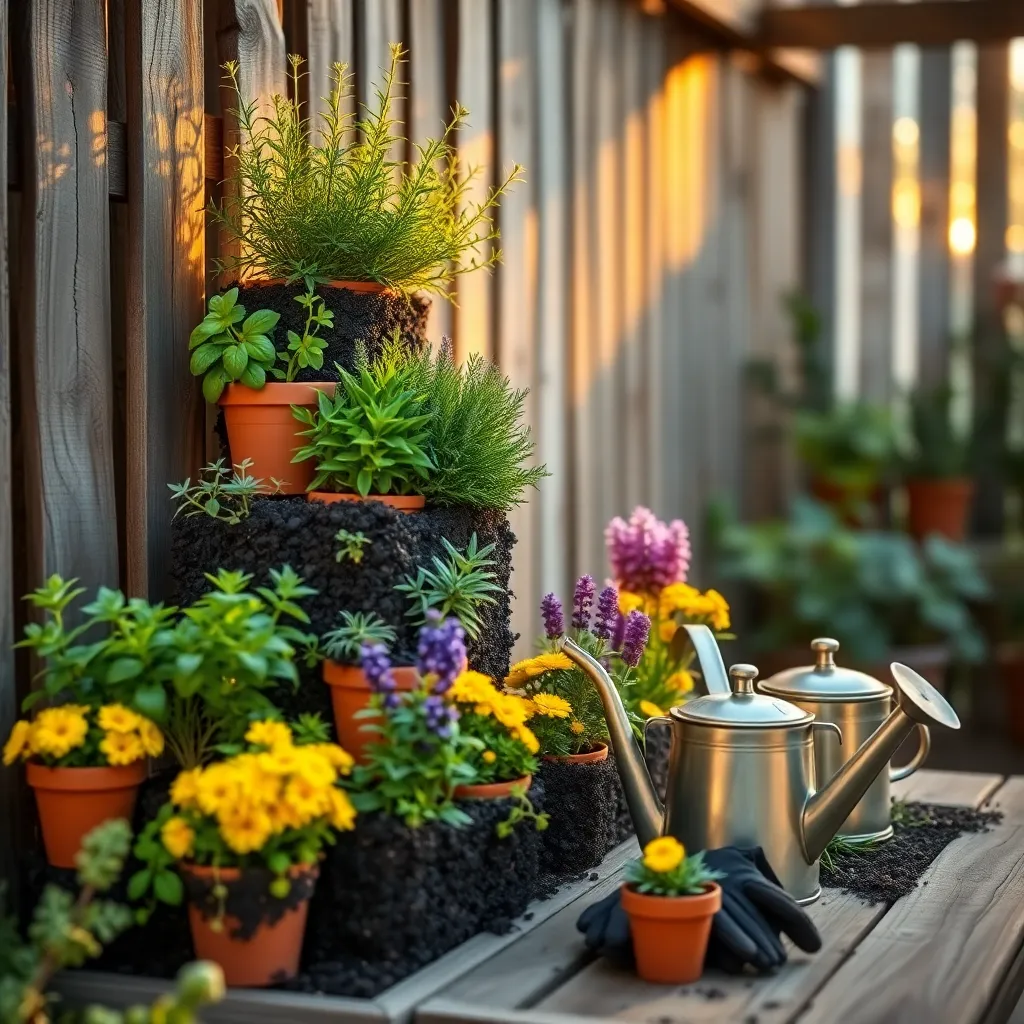
Creating a tiered herb garden is an excellent way to maximize space while adding a touch of green to your living area. By stacking planters or using a vertical frame, you can grow multiple types of herbs even in a small footprint.
When building your tiered garden, start with a sturdy base that can support the weight of multiple planters. Consider using wooden pallets, ladder-style shelves, or a tiered plant stand to create various levels for your herbs.
Choose lightweight, well-draining soil to ensure your herbs have the best growing conditions. A mix of potting soil and perlite or vermiculite is ideal as it provides excellent aeration and moisture retention without becoming waterlogged.
Position your tiered herb garden in a sunny spot, as most herbs thrive with at least six hours of sunlight per day. If natural sunlight is limited, consider supplementing with grow lights to ensure your plants receive the necessary light for healthy growth.
Water your herbs consistently but avoid overwatering; a good rule of thumb is to water when the top inch of soil feels dry to the touch. Keep in mind that herbs in tiered gardens may dry out faster than those in larger containers, so regular checks are essential.
For more advanced gardeners, try incorporating a few companion planting techniques by placing complementary herbs, such as basil and tomatoes, together. This not only maximizes space but also helps in pest management and boosts plant health.
Install a Wall-Mounted Greenhouse
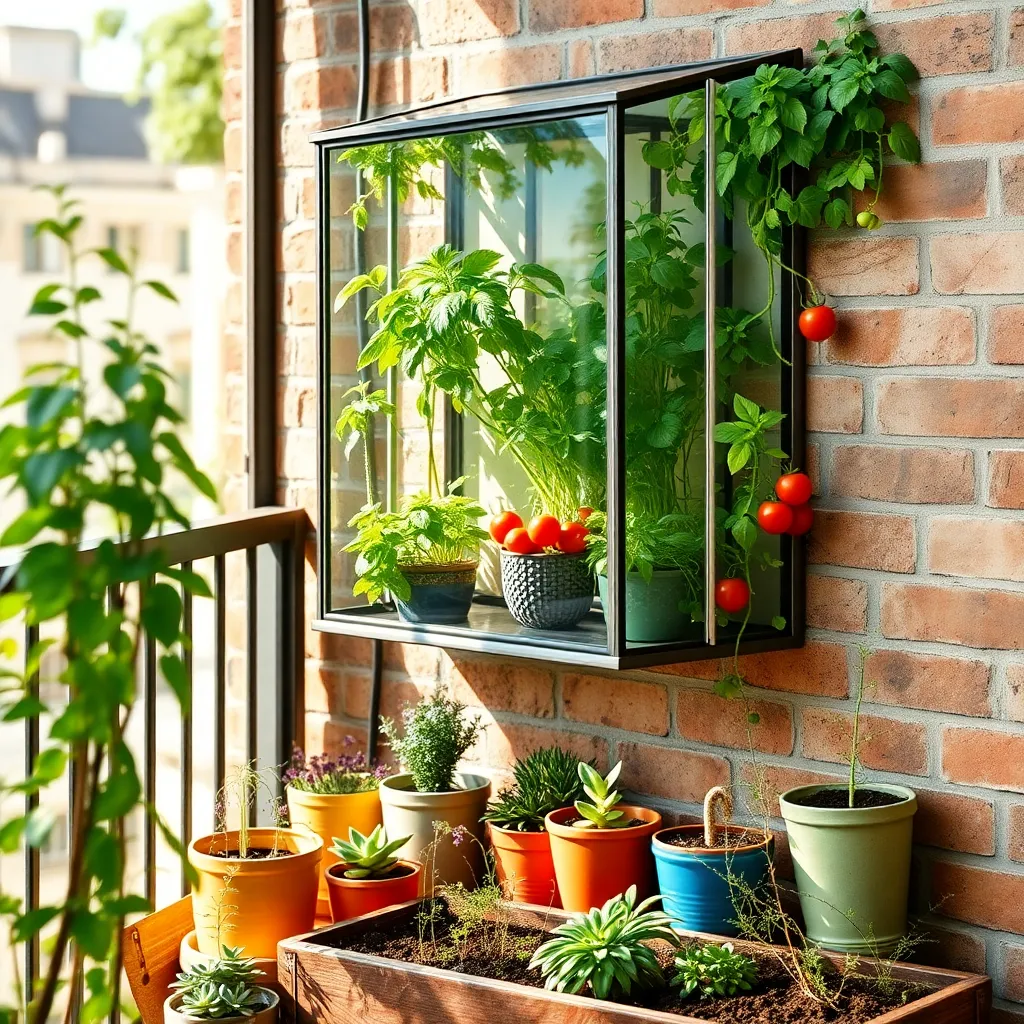
For those with limited space, a wall-mounted greenhouse offers a fantastic way to cultivate plants year-round. By attaching it to a sunlit wall, you can maximize warmth and light, creating an ideal microclimate for your plants.
Start by selecting the right location, preferably a south-facing wall that receives at least six hours of sunlight daily. This positioning ensures your greenhouse benefits from optimal natural light, reducing the need for artificial lighting.
When choosing plants for your wall-mounted greenhouse, consider compact varieties like herbs, salad greens, and dwarf tomatoes. These plants thrive in confined spaces and can be easily managed in pots or raised beds within your greenhouse.
It’s vital to maintain consistent temperatures and humidity levels inside your greenhouse. Use a thermometer and hygrometer to monitor conditions, keeping temperatures between 65-75°F (18-24°C) and humidity around 50-60% for most plants.
To maintain healthy plants, ensure proper watering and ventilation. Installing a small fan can help circulate air, preventing mold and mildew, while a drip irrigation system can provide consistent moisture without waterlogging the soil.
Create a Miniature Fairy Garden
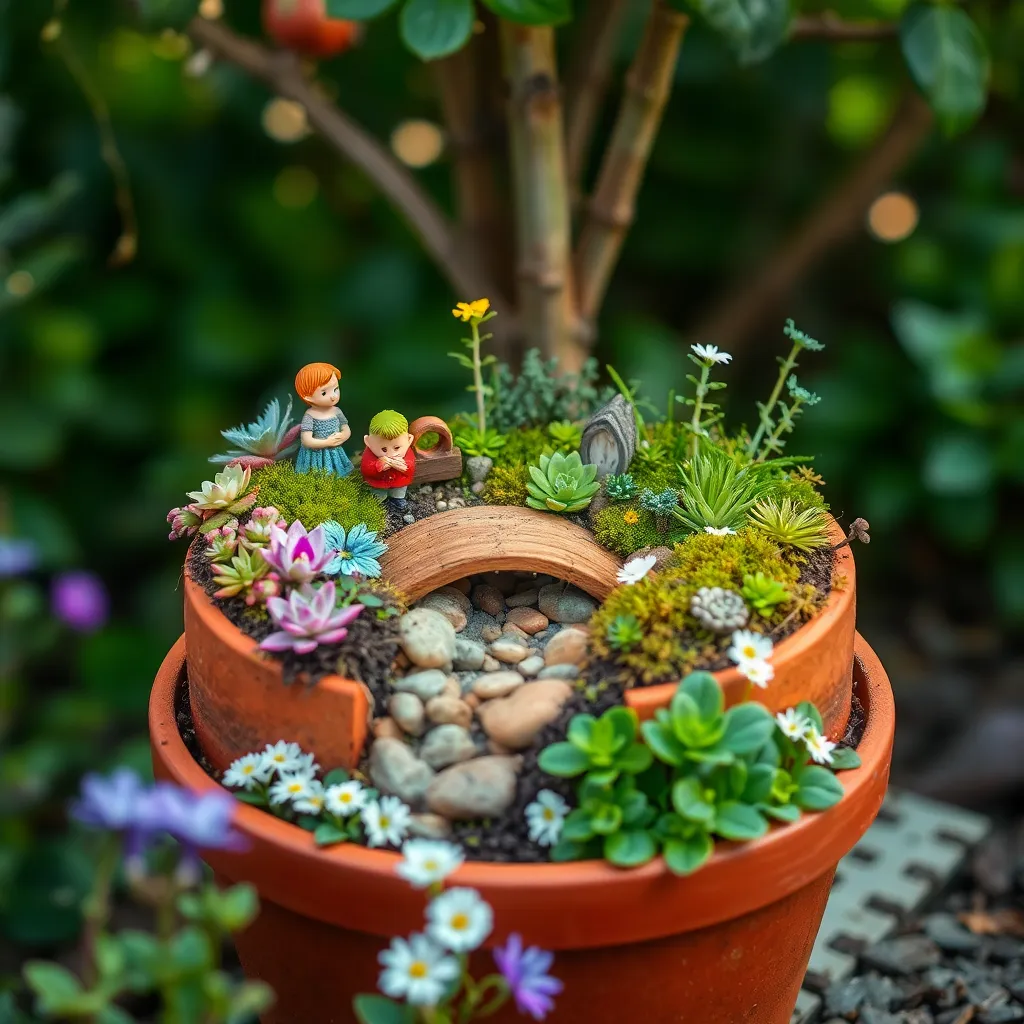
Creating a miniature fairy garden is a delightful way to add whimsy to your limited outdoor space. Start by choosing a small container, such as a shallow pot or an old drawer, ensuring it has drainage holes to prevent waterlogging.
Choose plants that remain small and are easy to maintain, like moss, succulents, or dwarf ferns. These plants thrive in well-draining soil, so consider a mix of potting soil and sand to create the perfect environment.
Incorporate miniature accessories such as tiny benches, pebbles, or small figurines to bring your fairy garden to life. You can find these items at garden centers or create them using natural materials like twigs and stones.
Water your fairy garden sparingly, as most of the recommended plants prefer dry conditions. Ensure it gets indirect sunlight, which helps the plants maintain their lush appearance without scorching the delicate leaves.
Repurpose Pallets for Vertical Growth
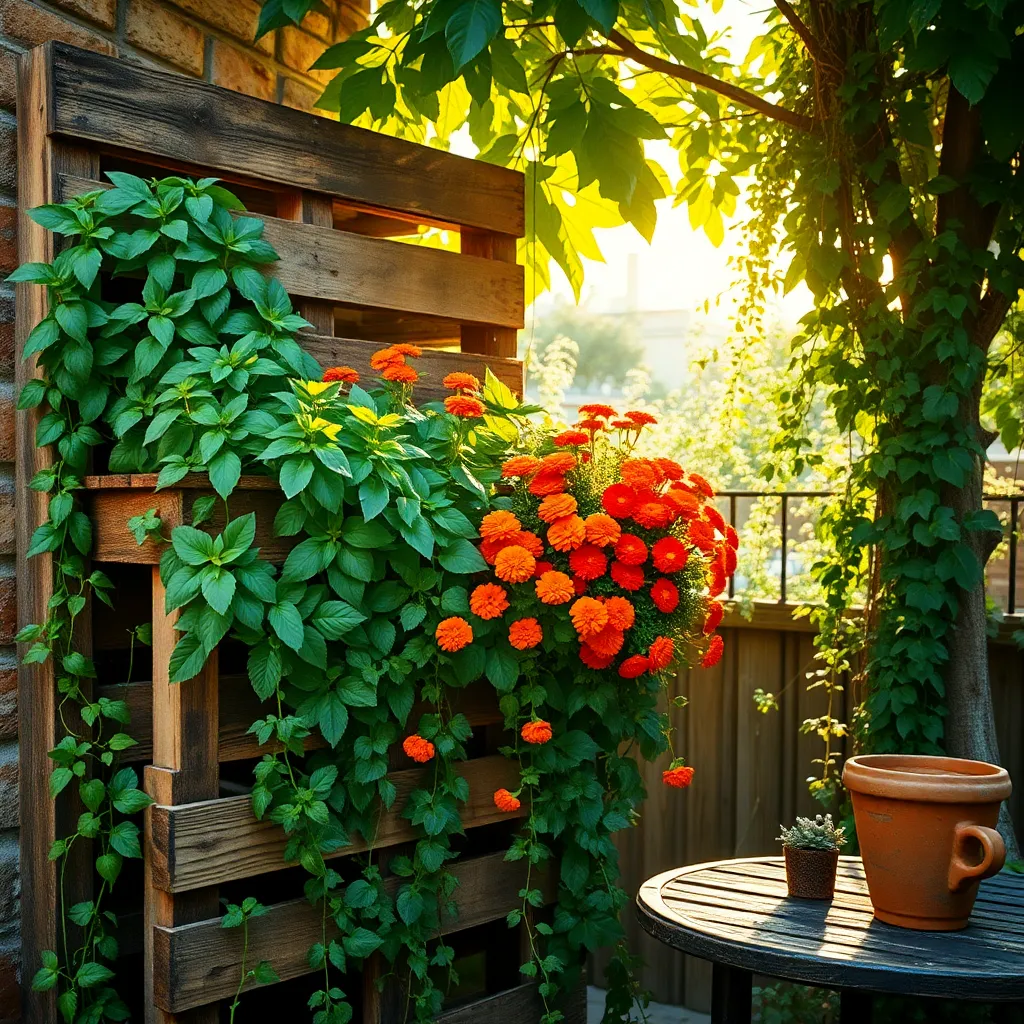
Repurposing pallets for vertical gardening is an ingenious way to maximize limited space while adding a rustic charm to your garden. Start by acquiring a sturdy, untreated wooden pallet and ensure it’s clean and free from any harmful chemicals.
Position your pallet vertically against a wall or fence, securing it with brackets if necessary to keep it stable. Fill the pallet with a high-quality potting mix, ensuring each slat is packed firmly to support plant roots.
Choose plants that thrive in vertical environments, such as herbs, succulents, or small flowering plants. Herbs like basil, thyme, and mint are excellent choices as they require minimal soil depth and can be harvested frequently.
Water your vertical pallet garden regularly, especially during hot weather, as vertical gardens tend to dry out faster. Consider using a drip irrigation system to keep moisture consistent, ensuring that your plants receive adequate hydration without overwatering.
Use Window Boxes for Added Space

Window boxes are an excellent solution for gardeners facing space constraints. They allow you to utilize vertical space efficiently, perfect for apartment dwellers or anyone with limited ground area.
Choose window boxes made from durable materials like cedar or plastic, which resist rotting and withstand weather changes. Ensure they have drainage holes to prevent overwatering, a common issue that can lead to root rot.
When selecting plants for your window boxes, consider herbs like basil, parsley, and thyme, which thrive in confined spaces. They require about six hours of sunlight daily, so position your boxes in a sunny spot for optimal growth.
For a splash of color, try planting petunias or geraniums, which are both vibrant and relatively low-maintenance. Use a lightweight, well-draining potting mix to support their growth, and feed them with a balanced liquid fertilizer every two weeks during the growing season.
Advanced gardeners can experiment with seasonal rotations, planting pansies in cooler months and switching to marigolds in summer. This approach not only maximizes your planting schedule but also keeps your window boxes looking fresh year-round.
Select Dwarf Plant Varieties
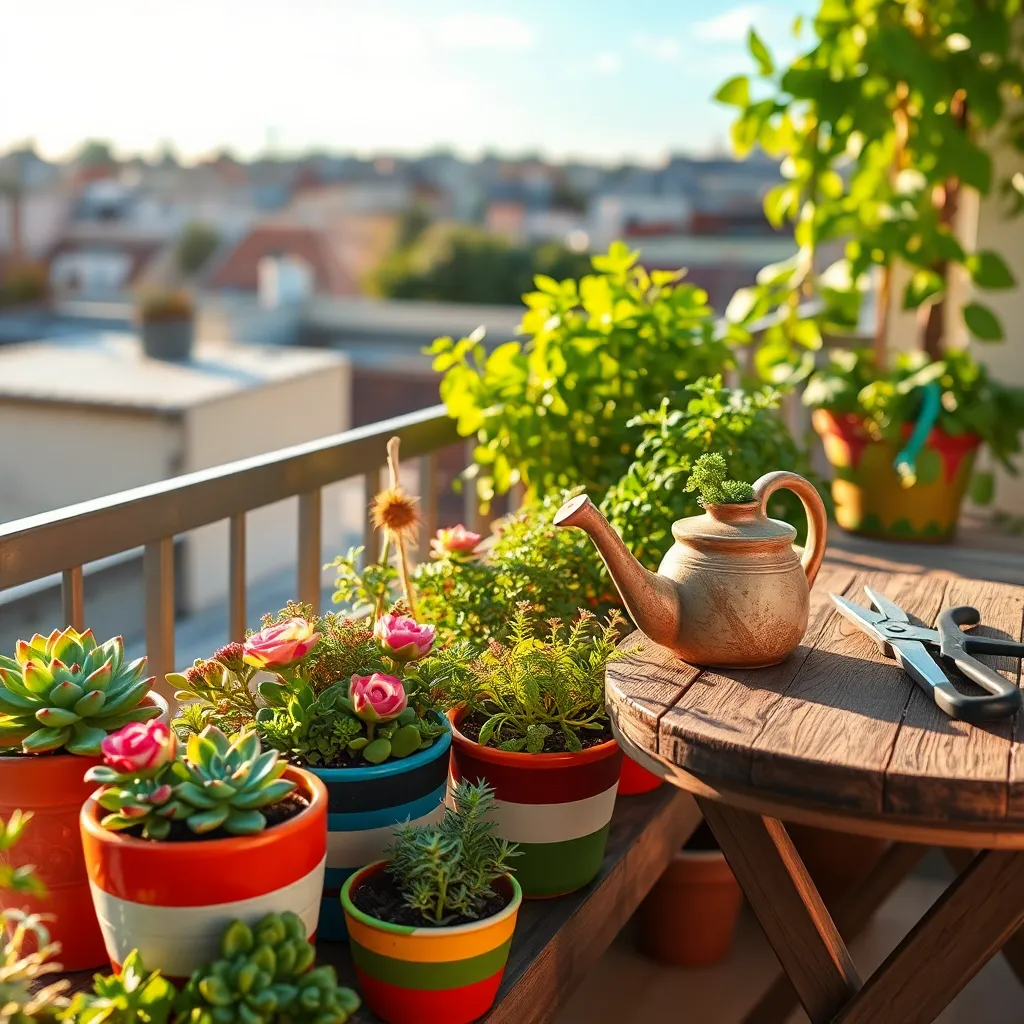
Selecting dwarf plant varieties is an excellent way to maximize space in small gardens. These compact plants offer the same beauty and diversity as their larger counterparts, making them ideal for limited spaces.
Opt for dwarf conifers like the Dwarf Alberta Spruce, which thrive in containers and require minimal pruning. They prefer well-drained soil and need watering once or twice a week, depending on the weather conditions.
Herbs such as dwarf basil and thyme can be grown in small pots, providing fresh flavors without taking up much room. Ensure these herbs receive at least six hours of sunlight daily and keep the soil moderately moist.
For a splash of color, consider dwarf varieties of flowering plants like marigolds or zinnias. These plants flourish in sunny spots and benefit from regular deadheading to encourage continuous blooms.
Maximize Corners with Corner Planters
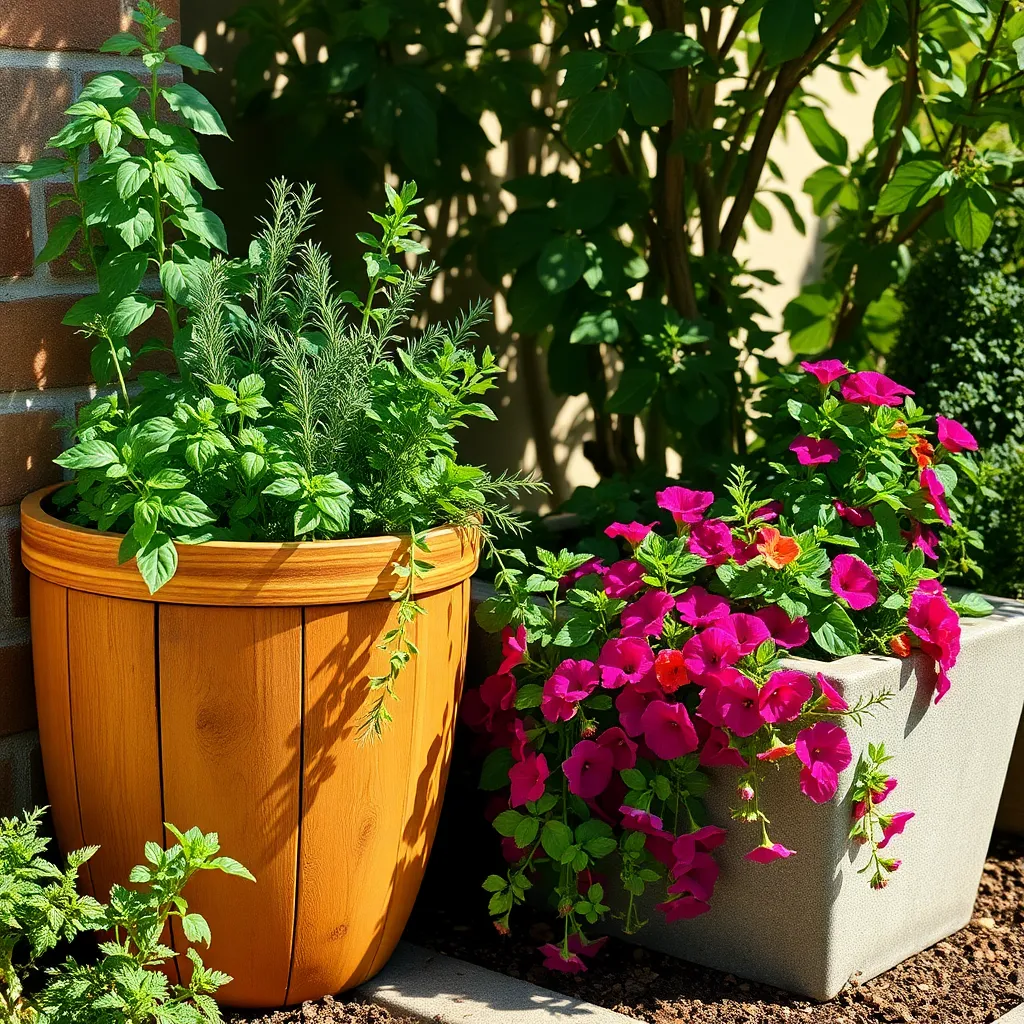
Transforming the often-overlooked corners of your garden with corner planters can significantly enhance your gardening space. These planters are perfect for maximizing space and creating an attractive focal point in tight areas, especially in urban settings.
Corner planters can be filled with a variety of plants, from vibrant flowers to lush greenery. Choose plants that thrive in the specific light conditions of your corner, such as shade-loving ferns or sun-loving succulents.
For beginners, it’s advisable to start with low-maintenance plants like geraniums or marigolds, which are both hardy and colorful. Ensure your corner planter has adequate drainage holes; this prevents waterlogging and keeps your plants healthy.
Advanced gardeners can experiment with vertical gardening by incorporating trellises into corner planters. Climbing plants like ivy or sweet peas not only add height but also create a lush, green backdrop that maximizes vertical space.
Conclusion: Growing Success with These Plants
In exploring ’10 Creative Garden Ideas for Limited Spaces,’ we’ve unearthed relationship concepts that bloom even in the most confined quarters. From nurturing your connection through shared gardening experiences to fostering patience and growth together, each idea is a seed planted in the garden of your relationship. Prioritizing communication and collaboration, embracing vulnerability, and appreciating the beauty of diversity are just a few of the nourishing practices highlighted here. These concepts remind us that, like a garden, relationships require care, attention, and creativity to flourish.
To cultivate these ideas in your own life, why not start today by planning a small gardening project with your partner? It could be as simple as selecting a few potted herbs for your windowsill. As you embark on this journey, remember to save this article for future inspiration and guidance. Simply bookmark it now, so you can revisit these ideas whenever you need a refreshing boost.
Looking forward, let this be the season where your relationship thrives. With dedication and the right tools, you can transform even the smallest space into a vibrant sanctuary of love and connection. Keep nurturing, keep growing, and watch your relationship blossom beautifully.

